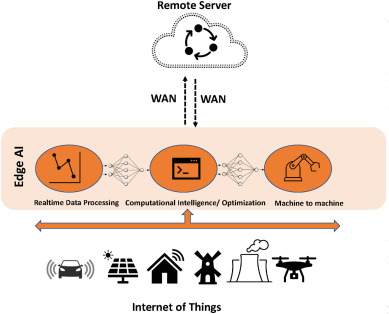
# AI and Cloud Security: How Artificial Intelligence is Shaping Cybersecurity
Artificial intelligence (AI) has emerged as a pivotal force in the tech arena, particularly with the swift advancement of generative AI (GenAI) and its diverse applications. One of the most impactful domains for AI adoption lies in cloud security, where innovative cybersecurity solutions have never been more essential. Companies are increasingly relying on AI-enhanced security tools to manage risks, improve threat detection, and bolster data safeguarding in cloud settings.
Nevertheless, the incorporation of AI-driven security measures brings its own set of challenges. The financial commitment to **AI development expenses** must be balanced against the long-term advantages of heightened security efficiency. Moreover, safeguarding AI systems against cyber threats has surfaced as a critical concern, given that AI frameworks process enormous amounts of sensitive information. This article delves into AI’s function in cloud security and underscores key AI-driven tactics that elevate threat detection, response to attacks, and compliance initiatives.
—
## AI-Driven Indicators of Attack (IOAs)
Indicators of Attack (IOAs) hold substantial importance in proactively recognizing security threats. Unlike conventional threat detection methods, which depend on static signature-based strategies, IOAs concentrate on detecting abnormal behaviors that may signal cyber attacks.
AI significantly amplifies the potency of IOAs by: (1) scrutinizing extensive behavioral datasets in real-time, (2) identifying nuanced patterns that human analysts may overlook, and (3) forecasting and adapting to evolving attack strategies.
Utilizing machine learning enables security teams to respond more swiftly and effectively to threats before they escalate into full-blown breaches. The capacity of AI to learn from past attack trends positions it as an invaluable resource in contemporary cloud security solutions.
—
## AI-Driven Threat Identification and Response
Cloud security threats are advancing in sophistication, necessitating proactive detection strategies. AI-driven **Cloud Detection and Response (CDR)** solutions aid in mitigating risks by automatically pinpointing and neutralizing threats.
With AI, organizations can:
– Identify unauthorized access attempts and suspicious behaviors.
– Observe misconfigurations that may leave systems vulnerable to breaches.
– Automate security responses, including isolating compromised workloads.
By minimizing manual efforts, AI-powered security improves reaction times and allows security professionals to concentrate on tackling complex threats rather than routine security monitoring.
—
## AI-Powered User and Entity Behavior Analytics (UEBA)
**User and Entity Behavior Analytics (UEBA)** utilizes AI to monitor user actions and detect threats such as insider breaches and account takeovers. AI-driven UEBA continually learns from extensive data streams to distinguish between typical and atypical user behaviors.
AI enhances UEBA by:
– Monitoring login behaviors to detect compromised accounts.
– Identifying behavioral discrepancies that suggest unauthorized access.
– Cross-referencing user actions with established threat indicators.
With AI-fueled behavioral analysis, organizations can uncover suspicious activities before they escalate into significant security incidents.
—
## AI-Driven Compliance Audits and Cloud Security Checks
Compliance remains a significant factor in cloud security, particularly regarding regulations such as **GDPR, HIPAA, and SOC 2**. AI-fueled compliance tools assist organizations in evading regulatory penalties by incessantly scanning cloud environments for policy breaches.
Automated compliance audits bolster security by:
– Recognizing and rectifying non-compliant configurations instantaneously.
– Automatically updating security protocols as regulations change.
– Producing comprehensive compliance reports with minimal human oversight.
By harnessing AI for compliance audits, organizations can uphold security best practices without demanding excessive manual efforts.
—
## Protecting Enterprise AI and Cloud Security
As organizations incorporate AI into their operations, the protection of AI models and sensitive datasets becomes paramount. Training AI often requires vast amounts of personal or proprietary information, making it an appealing target for cybercriminals.
Essential AI security considerations encompass:
– **Data Integrity:** Preventing tampering with AI models and **data poisoning attacks** that strife to impair AI predictions.
– **Access Control:** Tracking abnormal data access trends to block unauthorized alterations.
– **Continuous Monitoring:** Employing AI-driven **User and Entity Behavior Analytics (UEBA)** to observe unusual data interactions in real-time.
AI-enabled cloud security ensures that AI systems remain impervious to attacks, safeguarding both model integrity and compliance.
—
## The Effectiveness and Scalability of AI in Cloud Security
Traditional security measures often fail to keep pace with evolving cloud threats due to static rule-based detection strategies. AI-enhanced security solutions are more aptly suited for modern cloud architectures because they:
– Seamlessly scale to monitor **large amounts of cloud data**.
– Minimize false positives by fine-tuning anomaly detection processes.
– Identify complex, cross-domain threats that dodge conventional security measures.
By employing **machine learning models**, AI-driven security solutions maintain high accuracy levels while continuously evolving to meet emerging cyber threats.
—
## Conclusion
The adoption of AI in cybersecurity has transformed how organizations secure cloud environments. AI-powered threat detection, compliance automation, and behavioral analytics offer unparalleled insight and efficiency in cloud security.
As attack techniques grow more sophisticated, AI will have an increasingly prominent role to play.